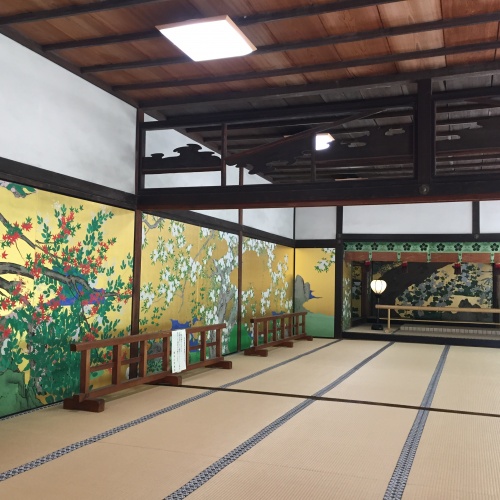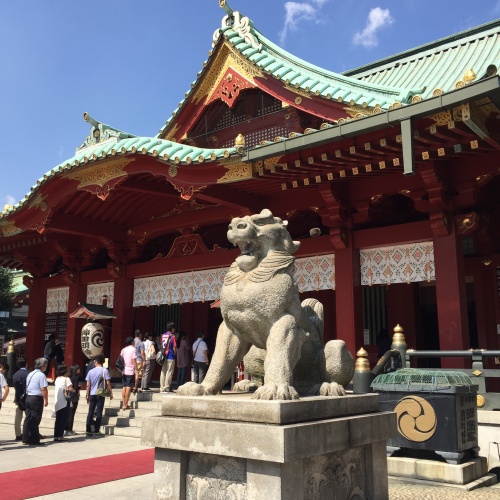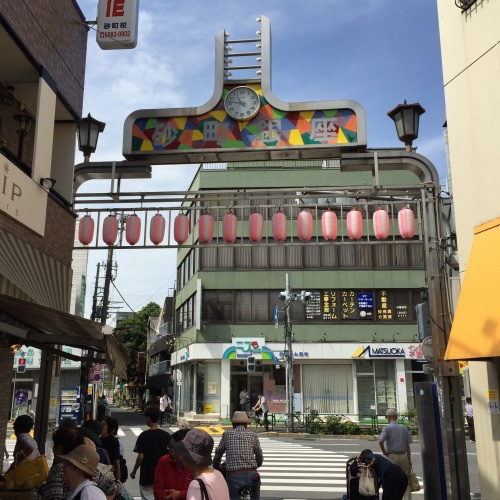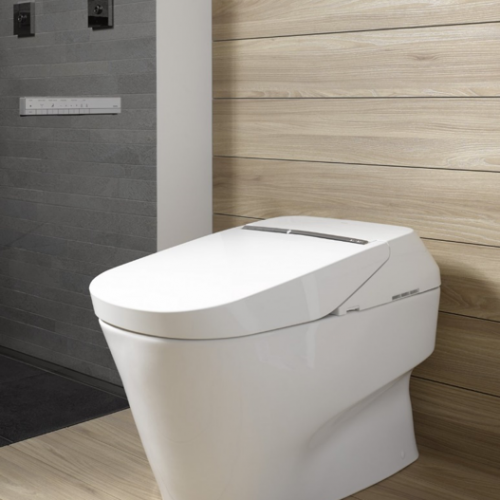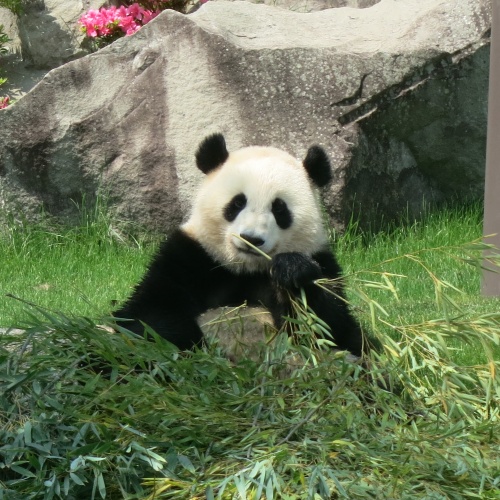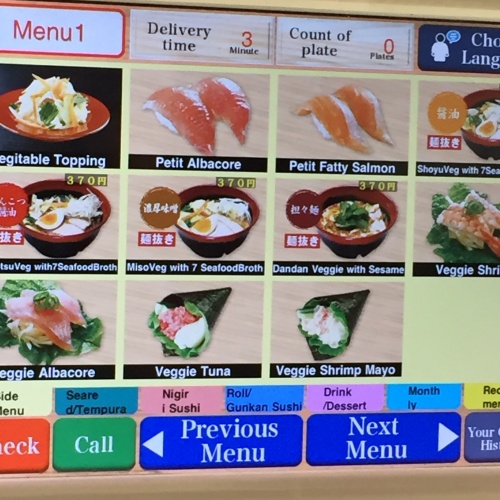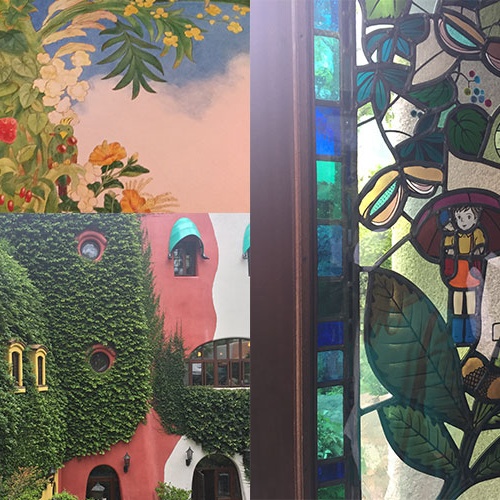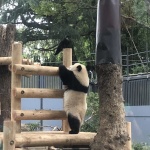Japan and religion
find out how you can experience the religions
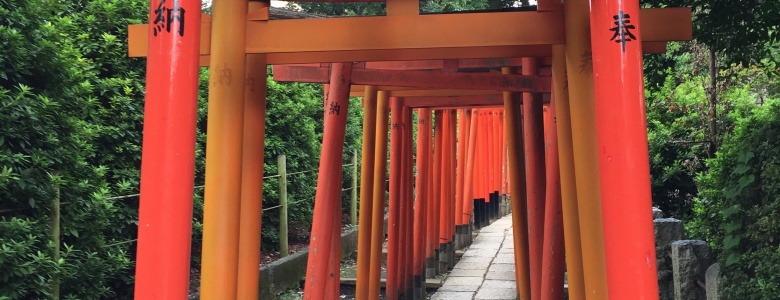
Japanese people are said to be born in Shinto, marry in Christianity and die in Buddhism! What does this mean? If you ask a Japanese person, what religion he/she practices, most will say that they are “loosely” Shinto (half) while 35% or so will say they are Buddhist. 5% new religion, 2% Christians. Others “not sure”. Even if that person claims to be Shinto or Buddhist, they probably do not practice the religion, but participate in festivals and rituals, which make them feel like they belong to that religion. It is more like a way of life or life style.
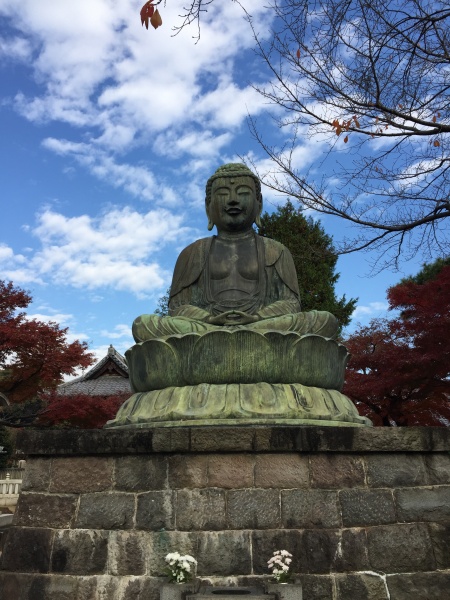
Buddha statue from Gokokuji in Tokyo
1 Japan and religion
2 Shinto- way of the gods
- 2.1 What is Shinto?
- 2.2 How Shinto mark the stages of life?
- 2.3 How travllers can participate in the Shinto rituals?
- 2.4 some pictures related to Shinto
3 Buddhism inJapan
- 3.1 History
- 3.2 Architecture and key features
4 new religion
5 Christianity
6 How you can experience religion in Japan, as a traveller?
- 6.1 visit to a Shrine-simple rules
- 6.2 visit to a Buddhist temple-simple rules
2. Shinto-“way of the gods”
2.1 What is Shinto?
Shinto 神道 is the largest and most influential religion in Japan. It literally means the way or the path of gods. It is not so much a “religion” but more of a set of rituals and festivals that focus on making connections between the present now and the past. Most Japanese participate in the rituals in festivals, but they do not actually practice the religion. There are 100,000 shrines all over Japan and about 78,000 priests. Priests dress in similar styles and perform similar rituals all over Japan.
Shinto consists of shrines that worship a lot of gods in many forms, like nature (rocks, trees, rivers, animals) as well as people. In the 8th century, Shinto was first recorded in the historical books of Kojiki and Nihon Shoki.
2.2 How Shinto marks the stages of life?
For the Japanese, their lifecycles are marked by visits to the local shrine. For example, after one month post birth, a baby will be taken to the shrine to celebrate his/her new life. Ages 3, 5 and 7 are marked by a special festival called Shichigosan, where girls (3, 7) dress up in kimono and boys (5) in hakama to celebrate. They will visit the local shrine with their family and the priest will perform special ceremonies. Age 20 marks the coming of adulthood in Japan and again, specific riturals take place. Friends, local community as well as family take part. A national holiday in January (Seijin no hi) marks this special event.
2.3 How can travellers participate in religious ceremonies and rituals from Shinto in Japan?
You can join the worship activities as well as rituals. Also, taking part in the pilgrimage has become a popular attraction, especially in the Kii Peninsula, with Kumano Kodo, Mount Koya and Ise Shrine. Refer to the article on Mount Koya (mainly Buddhism) and others here for more. http://hiddenjapanguide.com/archives/1448
2.4 Pictures related to Shinto

Torii gate, symbol of Shinto, from Mount Koya
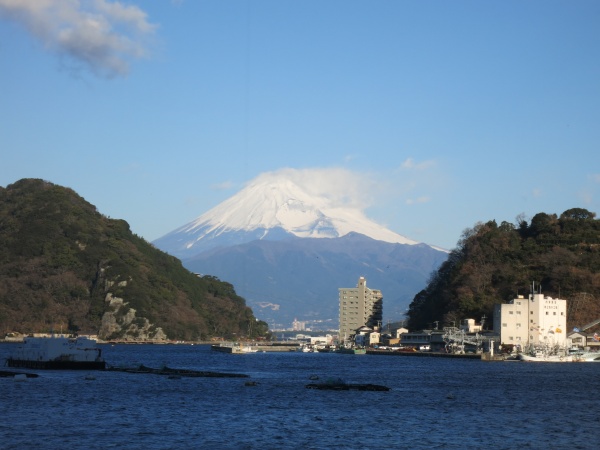
Mount Fuji is considered “sacred” in Shintoism.
3 Buddhism in Japan
3.1 History
Via Korea, the Chinese form of Buddhism first came to Japan in the 6th Century. Officially accepted by the ruling aristocrats in 587, they then started building Buddhist temples in Nara, the capital. Then as the new capital moved to Heian/old Kyoto, the building continued there.
There are many forms of Buddhism like the popular Shingon(esoteric) sect and Tendai(conservative) sect.
When the warrior class (samurai and shogun) became the ruling class, the capital moved to Kamakura in the 12th Century. Zen Buddhism flourished there.
With the Meiji Restoration in 1868, rapid Westernization and modernization of Japan began. The government placed the Emperor at the center of power and forced Shinto as the state and official religion. They tried to separate the complex and intertwined relationship of Shinto and Buddhism. After WWII, as Japan adopted the new consitution, freedom of belief and religion was guaranteed.
3.2 Architecture and key features
Architecture basically follows those of China and other Asian countries where Buddhism came from. On top of this, Japan added her orignial variations. Wood is predominantly used in Japan vs China and the West where stones are used.
Key temple features:
BUTSUDEN- hall of Buddha, or the main hall
MON-gate. Its name will represent the structure, position, its use and so on in the temple.
TO-pagoda. Odd number of tiers, like three and five.
SANDO-just like for Shinto shrines, it is the path leading from the gate to the main hall.
NIO-two woddedn guardian statues set at the right and the left side of the gate, protecting the temple.

The famous Gold Pavillion or Kinkakuji in Kyoto

Impressive pagoda in Toji temple, Kyoto
4 New religion
Present day Japanese consititution allows for freedom of belief. There are hundreds of officially recognized new religion. The largest one is Buddhist based, Soka Gakkai, with 10 million followers in Japan. They also have a very strong political network, via Komeito, which currently forms a coallition government with the LDP (Liberal Democratic Party) led by Prime Minister Abe. (as of Dec 2017)
5 Christianity in Japan
In 1549, Jesuit priests brought Christianity to Japan through the Southern island of Kyushu, as there were Portugese traders in Nagasaki. They were welcomed and became very successful in converting many people from different classes of society. Gradually it spread to other regions and converts reached 100,000 by 1570s. However, the new government of Hideyoshi Toyotomi started to ban the religion, for fear of its increasing power. During the following government of the Tokugawa Shogunate, it was prohibited altogether. However, in spite of the ruthless efforts to stop the religion, there remained those who practised in secret, especially in Kyushu. In 1873, when Westernization and modernization of Japan started during the Meiji period, Christianity was allowed once again.
However, to this day, the % of Christians in Japan is limited to about 2%. Meanwhile, the festivals and celebrations of Christmas, Valentine, and Western Weddings are very popular in Japan.
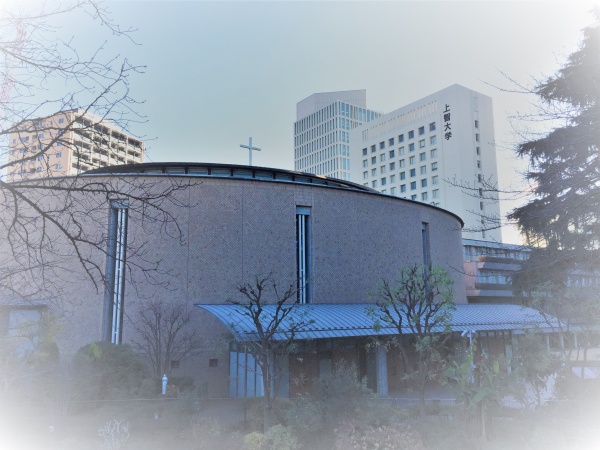
St. Ignatius Cathedral in Yotsuya
Visit Yotsuya. For more, check the article on Yotsuya here. http://hiddenjapanguide.com/archives/317

“Nicholai-do” in Ochanomizu
Check the following article for more on Ochanomizu area-well worth your time to visit! http://hiddenjapanguide.com/archives/79
6 How can travellers participate in religious ceremonies and rituals from Shinto and Buddhism in Japan?
You can join the worship activities as well as rituals. Also, taking part in the pilgrimage has become a popular attraction, especially in the Kii Peninsula, with Kumano Kodo, Mount Koya and Ise Shrine. Refer to the article on Mount Koya and others here for more. http://hiddenjapanguide.com/archives/1448
When visiting a shrine or a temple, there are simple rules that you can keep in mind.
6.1 visit to a shrine-simple rules
Shrine
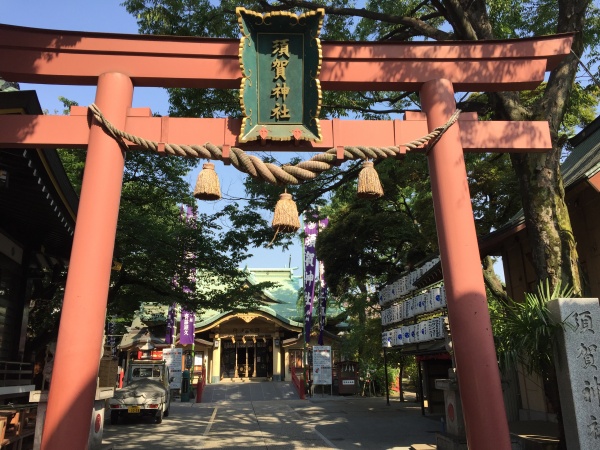
Torii gate of Suga Shrine in Tokyo
1 Bow at the entrance gate, Torii, to show respect.
2 Perform Temizu as there is always a water basin.
- Take the dipper in your right hand and scoop up the water till it is full.
- Pour some into your left hand first.
- Then transfer the dipper into your left hand, and perform the same for your right hand.
- Then transfer it back into your right hand again and pour some into your left palm, so that you can sip the water into your mouth to quietly rinse. (don`t drink!) then out into the drain quietly.
- Hold the handle of the dipper with both hands now and turn it vertically so that you are washing the handle with the water that is left. Then place it back.
3 Approach the shrine and place a small donation. 5yen coin is said to bring good luck. Then ring the bell twice. Bow twice. Clap your hands twice and after the second clap, hold your hands together and make a wish. Then a final bow.
4 If you like, you can buy these little charms at the shrine shop.
Omamori- charm that are for good luck, good health, success for business or exam and so on.
Omikuji- paper fortune-telling with Daikichi大吉as the best of luck, all the way to Daikyo 大凶, worst luck (although it is very rare to get this, so don`t worry!)
Ema-wooden plaque where wishes are already written or you can write your own wish. Usually, you leave them at the shrine so that your wish will come true. There is a place to hang them.
6.2 visit to a temple-simple rules
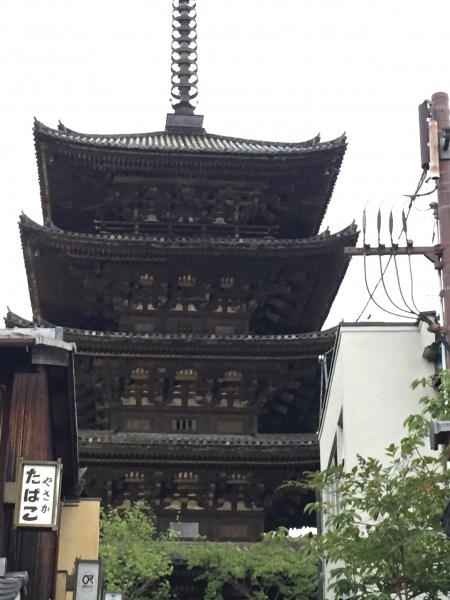
Pagoda at Yasaka no to in Kyoto
1 Behave with respect.
2 First throw the coin into the box and make a short prayer.
3 If you want to, you can buy some incense and burn them using the light available. Fan the smoke towards you, as it is believed to have healing power. Then place the burning incense into the large insence burners and make a short prayer.
4 If you like, you can buy these little charms at the shop.
Enjoy your visit! (please check the other articles in hiddenjapanguide for more on specific visits to temples and shrines in Japan!)
Any questions or comments?
Read More Articles: Column
3 Less Crowded Places in Kyoto
1 Avoid the crowd in Kyoto 2 TOJI-hidden away but you will be overwhelmed! 3 CHISAKUIN- beautiful, […]
Ochanomizu, Tokyo`s Quartier Latin
Visit Tokyo`s `Quartier Latin`, with a lot of universities, unique music and instrument stores. Very few tourists […]
Sunamachi Shopping Street
Come and enjoy the freshly made Japanese street food! Feel the traditional nostalgia of old Tokyo. This […]
The shrinking population of Japan
You may have wondered why there are so many senior citizens in Japan. Why is Japan`s population […]
High Tech Toilets
Have you ever wondered why the toilets in Japan are so different to those that you use […]
Convenience Stores (konbini, コンビニ)
Visit the one closest to your place and if possible, choose 7-11. Enjoy checking out their products, […]
ADVENTURE WORLD in SHIRAHAMA
1 Adventure World in Shirahama- great for family and kids. 2 Basic information on Adventure World in […]
Crafts Made in Japan by Japanese artists
Sure, there are tons of places to shop. But, if you are looking for one-and-only, hand made […]
Best Revolving Sushi Restaurant for FAMILY and KIDS: KURA
There are lots of Sushi restaurant in Japan and you are spoilt for choice. But for […]
JAPANESE ANIMATION- “Your Name” and Ghibli Museum
1 Japanese animation 1.1 “Your Name” by Makoto Shinkai 1.2 Site visits for “Your Name” 2 Ghibli […]
